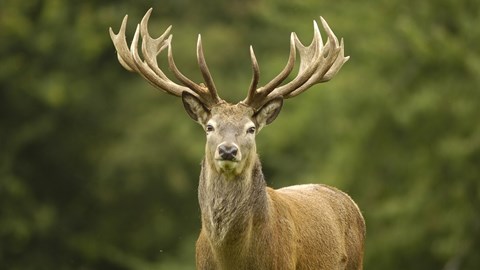Stamp: Caribou head insc. “TRAIL OF THE CARIBOU LANGEMARCK” (Newfoundland 1919)
Caribou head insc. “TRAIL OF THE CARIBOU LANGEMARCK” (Newfoundland 1919)
02 January (Newfoundland ) within release Newfoundland Contingent, 1914-1918 goes into circulation Stamp Caribou head insc. “TRAIL OF THE CARIBOU LANGEMARCK” face value 15 Newfoundland cent
| Stamp Caribou head insc. “TRAIL OF THE CARIBOU LANGEMARCK” in catalogues | |
|---|---|
| Stamp Number: | Sn: NW 124b |
| Stanley Gibbons: | Sg: NW 139a |
Stamp is vertical format.
Actual perforation : Comb 14 x 13.9. Printed by : De La Rue & Co. Ltd., LondonAlso in the issue Newfoundland Contingent, 1914-1918:
- Stamp - Caribou head insc. “TRAIL OF THE CARIBOU GUEUDECOURT” face value 3;
- Stamp - Caribou head insc. “TRAIL OF THE CARIBOU LANGEMARCK” face value 15;
Stamp Caribou head insc. “TRAIL OF THE CARIBOU LANGEMARCK” it reflects the thematic directions:
Animals are multicellular, eukaryotic organisms of the kingdom Animalia (also called Metazoa). All animals are motile, meaning they can move spontaneously and independently, at some point in their lives. Their body plan eventually becomes fixed as they develop, although some undergo a process of metamorphosis later on in their lives. All animals are heterotrophs: they must ingest other organisms or their products for sustenance.
A deer (pl.: deer) or true deer is a hoofed ruminant ungulate of the family Cervidae. It is divided into subfamilies Cervinae (which includes, among others, muntjac, elk (wapiti), red deer, and fallow deer) and Capreolinae (which includes, among others reindeer (caribou), white-tailed deer, roe deer, and moose). Male deer of almost all species (except the water deer), as well as female reindeer, grow and shed new antlers each year. These antlers are bony extensions of the skull and are often used for combat between males.
World War I or the First World War (28 July 1914 – 11 November 1918), also known as the Great War, was a global conflict between two coalitions: the Allies (or Entente) and the Central Powers. Main areas of conflict included Europe and the Middle East, as well as parts of Africa and the Asia-Pacific. There were important developments in weaponry including tanks, aircraft, artillery, machine guns, and chemical weapons. One of the deadliest conflicts in history, it resulted in an estimated 30 million military casualties, plus another 8 million civilian deaths from war-related causes and genocide. The movement of large numbers of people was a major factor in the deadly Spanish flu pandemic.
Mammals are any vertebrates within the class Mammalia (/məˈmeɪli.ə/ from Latin mamma "breast"), a clade of endothermic amniotes distinguished from reptiles (including birds) by the possession of a neocortex (a region of the brain), hair, three middle ear bones and mammary glands. All female mammals nurse their young with milk, secreted from the mammary glands. Mammals include the largest animals on the planet, the great whales. The basic body type is a terrestrial quadruped, but some mammals are adapted for life at sea, in the air, in trees, underground or on two legs. The largest group of mammals, the placentals, have a placenta, which enables the feeding of the fetus during gestation. Mammals range in size from the 30–40 mm (1.2–1.6 in) bumblebee bat to the 30-meter (98 ft) blue whale. With the exception of the five species of monotreme (egg-laying mammals), all modern mammals give birth to live young. Most mammals, including the six most species-rich orders, belong to the placental group. The largest orders are the rodents, bats and Soricomorpha (shrews and allies). The next three biggest orders, depending on the biological classification scheme used, are the Primates (apes and monkeys), the Cetartiodactyla (whales and even-toed ungulates), and the Carnivora (cats, dogs, seals, and allies).



